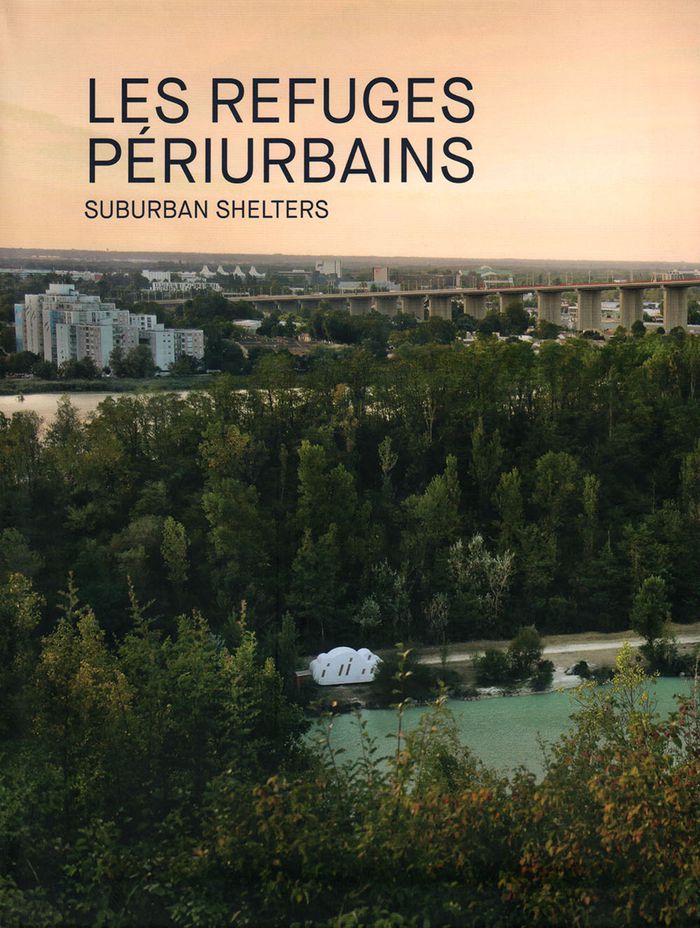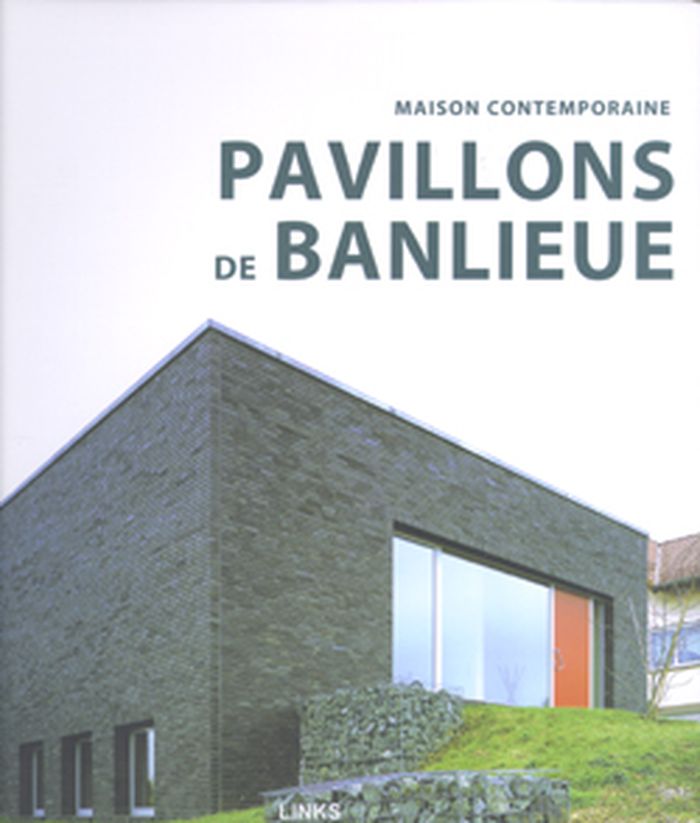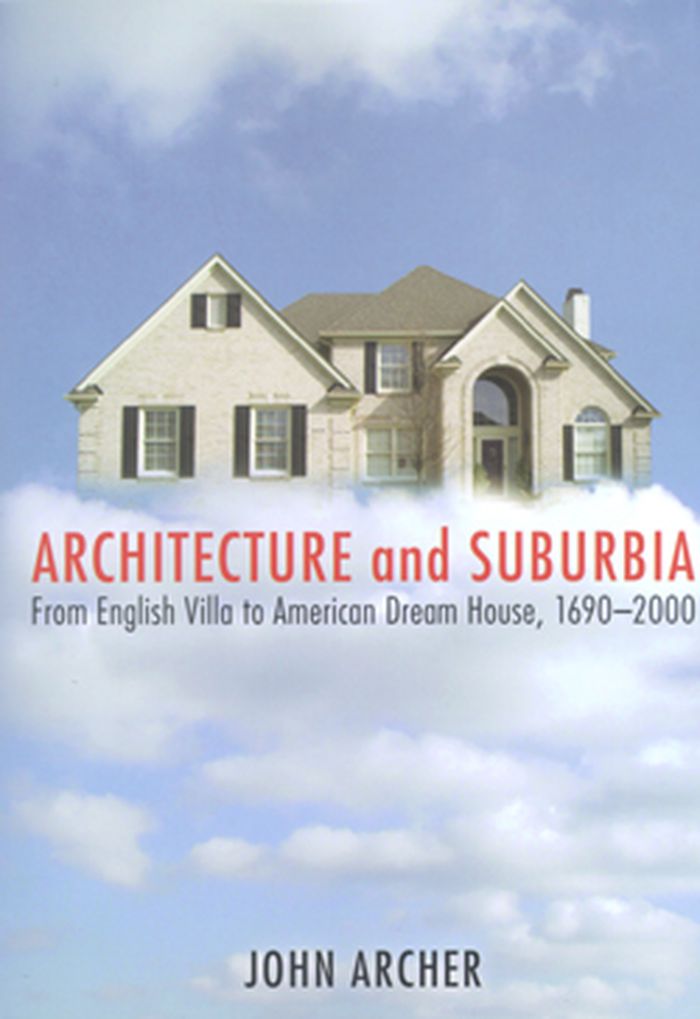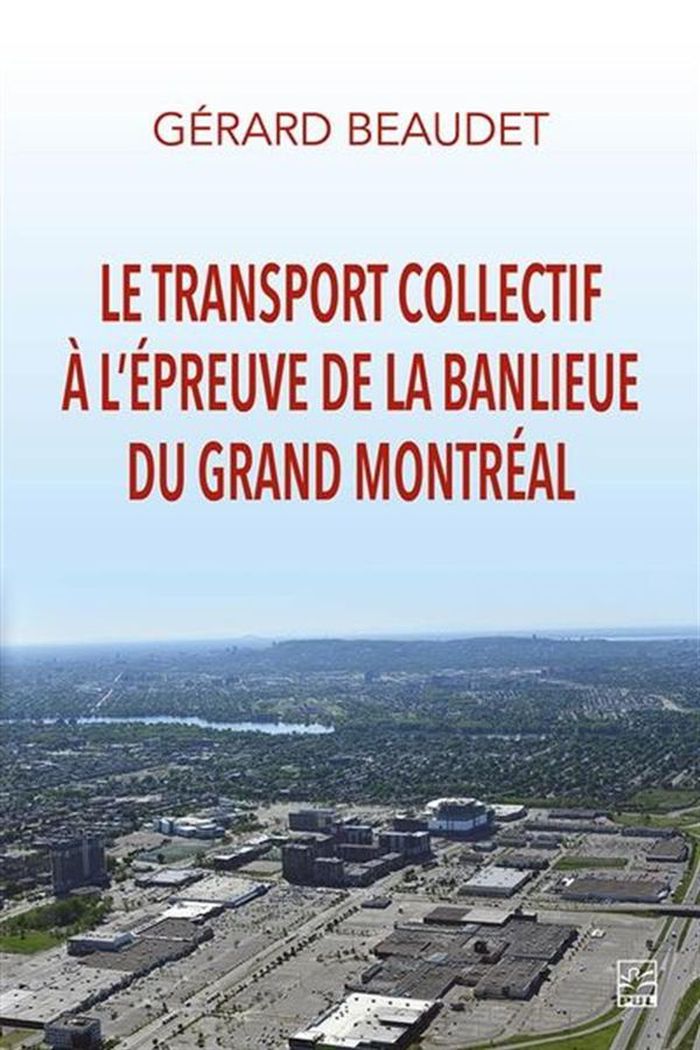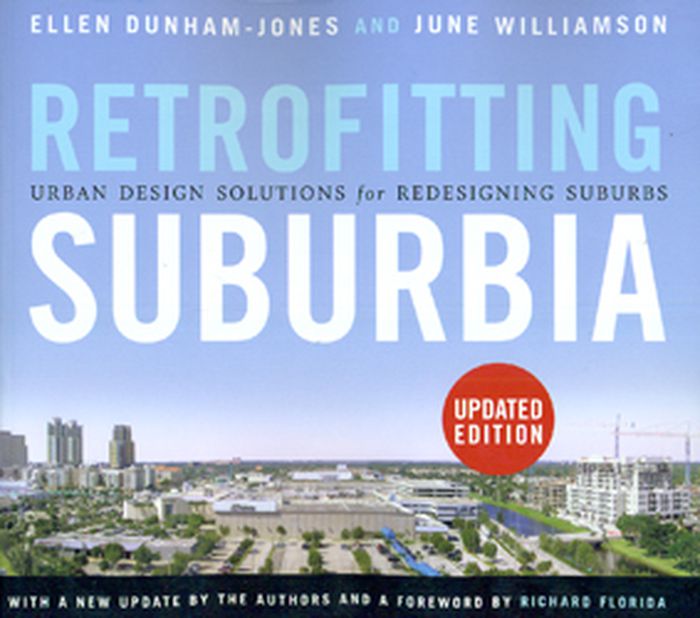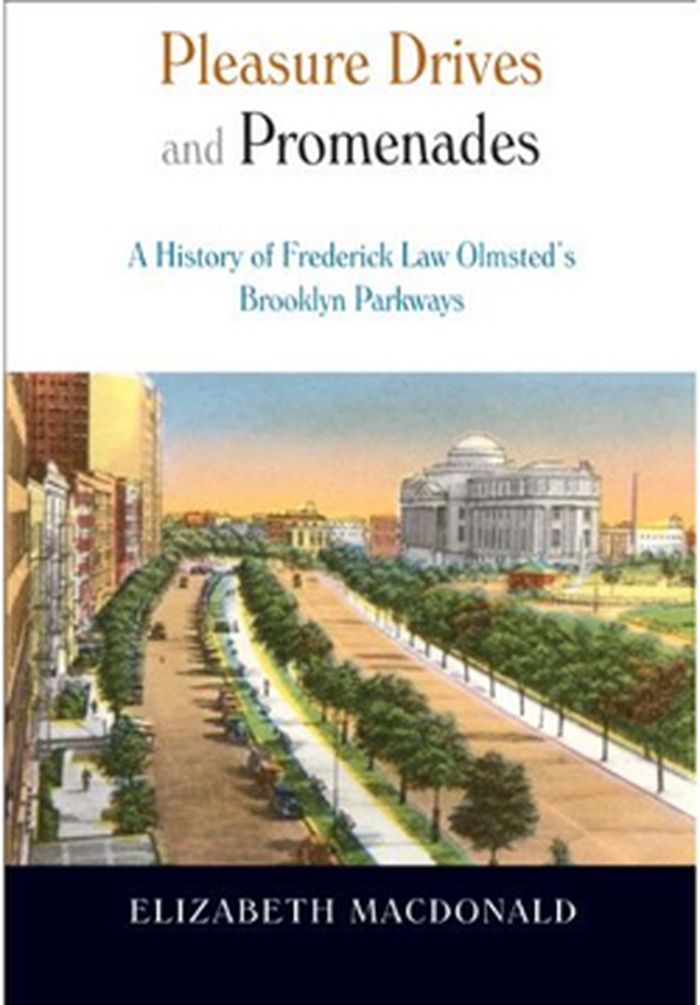$38.95
(available to order)
Summary:
La ville suburbaine est l'utopie réalisée de la prospérité. Elle est l'expansion sans fin du confort à la campagne qui a transformé la planète en réseau de parcs. C'est la ville vernaculaire du XXe siècle. Pour comprendre la fabrication de cette grande installation planétaire, Emeric Lambert dresse un portrait chinois du projet suburbain. Il reconstruit une histoire(...)
Le parc planétaire : la fabrication de l’environnement suburbain
Actions:
Price:
$38.95
(available to order)
Summary:
La ville suburbaine est l'utopie réalisée de la prospérité. Elle est l'expansion sans fin du confort à la campagne qui a transformé la planète en réseau de parcs. C'est la ville vernaculaire du XXe siècle. Pour comprendre la fabrication de cette grande installation planétaire, Emeric Lambert dresse un portrait chinois du projet suburbain. Il reconstruit une histoire décentrée de la ville. En suivant l'épopée de la constitution de la ville de Sénart, il montre comment l'urbanisme planifié hérité de la modernité a cédé la place à l'opportunisme opérationnel. Il construit ainsi la théorie informulée du suburbanisme qui a oeuvré au développement d'une ville informe et pourtant très efficace. Plus qu'une vision d'urbaniste, c'est un phénomène culturel, dont les ramifications s'étendent à la technologique, à l'art et à la politique, qui est exposé ici avec pragmatisme. Cette enquête suburbaine s'adresse à tous ceux qui s'intéressent à la fabrication de notre environnement et aux controverses démocratiques qu'elle soulève.
Suburbs
$45.95
(available to order)
Summary:
La Seine Saint-Denis est un territoire social et politique singulier, un territoire médiatisé et stigmatisé – le ''9.3'' – qui a connu aux cours des quatre dernières décennies de profondes mutations. La Seine-Saint-Denis reste emblématique des banlieues populaires, de leur histoire et de leurs transformations. Alors que certains observateurs défendent que les enjeux(...)
Banlieues populaires : territoires, sociétés, politiques
Actions:
Price:
$45.95
(available to order)
Summary:
La Seine Saint-Denis est un territoire social et politique singulier, un territoire médiatisé et stigmatisé – le ''9.3'' – qui a connu aux cours des quatre dernières décennies de profondes mutations. La Seine-Saint-Denis reste emblématique des banlieues populaires, de leur histoire et de leurs transformations. Alors que certains observateurs défendent que les enjeux d’intégration et de cohésion, sociales et urbaines auraient quitté la banlieue pour se déplacer vers les grandes périphéries des métropoles, cet ouvrage a pour ambition de rappeler et de démontrer que les banlieues populaires ont constitué et constituent encore aujourd’hui un fait social majeur de notre époque.
Suburbs
$37.95
(available to order)
Summary:
Ce livre raconte un programme unique au monde : la conception, la construction et l’usage de 10 refuges périurbains – 10 oeuvres d’art, qui dialoguent avec un territoire et accompagnent de nouvelles pratiques sociales. Situées dans des enclaves de verdure au sein d’un environnement urbain dense, ou offrant une vue spectaculaire sur l’industrie, le port, l’aménagement, les(...)
Les refuges périurbains : un art à habiter
Actions:
Price:
$37.95
(available to order)
Summary:
Ce livre raconte un programme unique au monde : la conception, la construction et l’usage de 10 refuges périurbains – 10 oeuvres d’art, qui dialoguent avec un territoire et accompagnent de nouvelles pratiques sociales. Situées dans des enclaves de verdure au sein d’un environnement urbain dense, ou offrant une vue spectaculaire sur l’industrie, le port, l’aménagement, les refuges mettent en scène la relation du bâti et du site… Adossées à un Sentier Métropolitain de randonnée pédestre de 200 km, ces refuges sont des oeuvres performées par les marcheurs qui y passent, y dorment, y rêvent.
Banlieues vues d'ailleurs
$15.95
(available to order)
Summary:
Des responsables étrangers travaillant en France apportent leurs regards et leurs expériences croisés sur les banlieues. Echanges institutionnels, initiatives économiques, créations culturelles, etc., leurs enseignements invitent à développer d'autres formes de relations avec les habitants pour donner une image attractive des quartiers populaires.
Banlieues vues d'ailleurs
Actions:
Price:
$15.95
(available to order)
Summary:
Des responsables étrangers travaillant en France apportent leurs regards et leurs expériences croisés sur les banlieues. Echanges institutionnels, initiatives économiques, créations culturelles, etc., leurs enseignements invitent à développer d'autres formes de relations avec les habitants pour donner une image attractive des quartiers populaires.
Suburbs
Pavillons de banlieue
$79.95
(available to order)
Summary:
Ce travail monographique analyse, grâce aux exemples récents réalisés par des architectes de renom international, la difficulté d'intégrer dans les vides du puzzle suburbain de nouveaux volumes d'habitation qui abordent les contraintes avec des solutions techniques et formelles exemplaires. Magnifiquement illustré, ce volume analyse 22 projets de Pavillons de Banlieue(...)
Pavillons de banlieue
Actions:
Price:
$79.95
(available to order)
Summary:
Ce travail monographique analyse, grâce aux exemples récents réalisés par des architectes de renom international, la difficulté d'intégrer dans les vides du puzzle suburbain de nouveaux volumes d'habitation qui abordent les contraintes avec des solutions techniques et formelles exemplaires. Magnifiquement illustré, ce volume analyse 22 projets de Pavillons de Banlieue soigneusement sélectionné pour leur créativité et leur génie dans le rapport qu'ils entretiennent avec la rue, le jardin et l'espace intime de l'intérieur. En prenant en compte la nécessité de décrire rigoureusement les projets par le biais de superbes photographies, de plans et de coupes, et de détails sur les matériaux, ce livre offre l'information indispensable sur toutes les étapes du processus de la création architecturale.
Suburbs
$27.50
(available to order)
Summary:
The American suburban dream house-a single-family, detached dwelling, frequently clustered in tight rows and cul-de-sacs-has been attacked for some time as homogeneous and barren, yet the suburbs are home to half of the American population. Architectural historian John Archer suggests the endurance of the ideal house is deeply rooted in the notions of privacy, property,(...)
Architecture and suburbia: from english villa to American dream house, 1690-2000
Actions:
Price:
$27.50
(available to order)
Summary:
The American suburban dream house-a single-family, detached dwelling, frequently clustered in tight rows and cul-de-sacs-has been attacked for some time as homogeneous and barren, yet the suburbs are home to half of the American population. Architectural historian John Archer suggests the endurance of the ideal house is deeply rooted in the notions of privacy, property, and selfhood that were introduced in late seventeenth-century England and became the foundation of the American nation and identity. Spanning four centuries, Architecture and Suburbia explores phenomena ranging from household furnishings and routines to the proliferation of the dream house in parallel with Cold War politics. Beginning with John Locke, whose Enlightenment philosophy imagined individuals capable of self-fulfillment, Archer examines the eighteenth-century British bourgeois villa and the earliest London suburbs. He recounts how early American homeowners used houses to establish social status and how twentieth-century Americans continued to flock to single-family houses in the suburbs, encouraged by patriotism, fueled by consumerism, and resisting disdain by disaffected youths, designers, and intellectuals. Finally, he recognizes “hybridized” or increasingly diverse American suburbs as the dynamic basis for a strengthened social fabric. From Enlightenment philosophy to rap lyrics, from the rise of a mercantile economy to discussions over neighborhoods, sprawl, and gated communities, Archer addresses the past, present, and future of the American dream house. John Archer is professor of cultural studies and comparative literature at the University of Minnesota. His book The Literature of British Domestic Architecture, 1715-1842, is the standard reference on the subject, and he also contributed to the Encyclopedia of Urban America and the Encyclopedia of Twentieth-Century Architecture.
Suburbs
$29.95
(available to order)
Summary:
Territoire de prédilection de développement axé sur le transport en commun (Transit-oriented development), la banlieue est toutefois moins formellement remise en question que revisitée. Le défi n’est pas pour autant facile à relever. C’est à l’examen de cet enjeu qu’est consacré le présent ouvrage.
Le transport collectif à l'épreuve de la banlieue du Grand Montréal
Actions:
Price:
$29.95
(available to order)
Summary:
Territoire de prédilection de développement axé sur le transport en commun (Transit-oriented development), la banlieue est toutefois moins formellement remise en question que revisitée. Le défi n’est pas pour autant facile à relever. C’est à l’examen de cet enjeu qu’est consacré le présent ouvrage.
Suburbs
$62.00
(available to order)
Summary:
With a new update introduction, this is a comprehensive guidebook for architects, planners, urban designers, and developers that illustrates how existing suburbs can be redesigned and redeveloped. The authors, both architects and noted experts on the subject, shows how development in existing suburbs can absorb new growth and evolve in relation to changed demographic,(...)
Retrofitting suburbia: urban design solutions for redesigning suburbs
Actions:
Price:
$62.00
(available to order)
Summary:
With a new update introduction, this is a comprehensive guidebook for architects, planners, urban designers, and developers that illustrates how existing suburbs can be redesigned and redeveloped. The authors, both architects and noted experts on the subject, shows how development in existing suburbs can absorb new growth and evolve in relation to changed demographic, technological, and economic conditions. The book documents innovative case studies of prototypical American suburban developments (malls, commercial strips, office parks, cul-de-sac subdivisions) that have been retrofitted to new uses and forms.
Suburbs
$49.95
(available to order)
Summary:
Brooklyn’s Parkway Plan of pleasure drives and promenades was the collaborative undertaking of landscape architect Frederick Law Olmsted, who designed Prospect and Central parks with partner Calvert Vaux, and forward-looking park commissioner, James S. T. Stranahan. Featuring contemporary architectural drawings and period illustrations, Pleasure Drives and Promenades(...)
Pleasure drives and promenades : a history of Frederick Law Olmsted's Brooklyn Parkways
Actions:
Price:
$49.95
(available to order)
Summary:
Brooklyn’s Parkway Plan of pleasure drives and promenades was the collaborative undertaking of landscape architect Frederick Law Olmsted, who designed Prospect and Central parks with partner Calvert Vaux, and forward-looking park commissioner, James S. T. Stranahan. Featuring contemporary architectural drawings and period illustrations, Pleasure Drives and Promenades charts the inception and early implementation of their plan as well as its lasting influence on the urban landscape.
Suburbs
$37.95
(available to order)
Summary:
By the end of the twentieth century, America’s suburbs contained more office space than its central cities. Many of these corporate workplaces were surrounded, somewhat incongruously, by verdant vistas of broad lawns and leafy trees. In Pastoral Capitalism, Louise Mozingo describes the evolution of these central (but often ignored) features of postwar urbanism in the(...)
Pastoral capitalism: A history of suburban corporate landscapes
Actions:
Price:
$37.95
(available to order)
Summary:
By the end of the twentieth century, America’s suburbs contained more office space than its central cities. Many of these corporate workplaces were surrounded, somewhat incongruously, by verdant vistas of broad lawns and leafy trees. In Pastoral Capitalism, Louise Mozingo describes the evolution of these central (but often ignored) features of postwar urbanism in the context of the modern capitalist enterprise. This book offers an indispensible chapter in urban history, examining not only the design of corporate landscapes but also the economic, social, and cultural models that determined their form.


